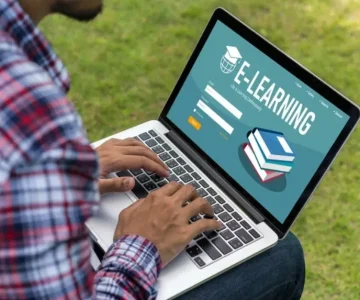The year 2024 marks a pivotal moment for education, with generative AI becoming a driving force in reshaping how students learn and how educators teach. From personalizing lessons to automating time-consuming tasks, these advanced tools are opening new possibilities in classrooms worldwide. Here’s a closer look at five standout generative AI platforms making waves in the education sector this year.
1. ChatGPT
Created by OpenAI with support from Microsoft, ChatGPT is perhaps the most widely recognized name in generative AI. It leverages an advanced language model to produce natural, human-like responses from simple text prompts, making it a versatile ally for both students and teachers.
Highlights:
- Conversational Learning: Engages in lifelike dialogues to answer questions and explain concepts.
- Custom Assistance: Delivers tailored explanations based on a learner’s level and needs.
- Always Available: Provides academic support at any time of day.
Potential Downsides:
- Information may occasionally lack complete accuracy.
- Overreliance could limit independent problem-solving skills.
In Practice:
From offering homework help and guiding students through challenging topics to assisting educators with lesson plan development, ChatGPT serves as a flexible and accessible learning partner.
2. Gemini
Developed by Google’s DeepMind and Google Research, Gemini represents the next stage of generative AI evolution. Fully multimodal, it processes not just text, but also images, audio, and video, adapting to diverse learning needs.
Highlights:
- Interactive Lessons: Encourages active participation through engaging activities.
- Data-Backed Insights: Monitors student performance and suggests improvements.
- Adaptive Learning: Adjusts content difficulty in real time.
Potential Downsides:
- Higher cost may limit adoption in smaller institutions.
- Requires strong technical infrastructure.
In Practice:
Gemini creates personalized learning paths, delivers instant feedback, and helps educators allocate resources effectively for different learning groups.
3. HeyHi
HeyHi offers an integrated AI-powered learning environment designed to enhance both academic skills and essential life competencies. It blends adaptive learning with holistic education strategies to deliver a tailored experience for every student.
Highlights:
- Adaptive Worksheets: Dynamically adjusts assignments to match student ability.
- Automated Grading: Saves teachers time with AI-powered marking tools.
- Continuous Learning Support: An “AI Learning Buddy” provides round-the-clock feedback.
- Centralized Management: Combines content delivery, assessment, and performance tracking in one platform.
In Practice:
HeyHi enables educators to generate quizzes, personalized modules, and even multimedia lessons, while providing detailed learner profiles to track progress over time.
4. Nolej
Nolej AI specializes in rapid creation of interactive learning resources such as flashcards, games, and video-based exercises. Its design supports both traditional classrooms and online learning environments.
Highlights:
- Fast Content Development: Produces engaging educational materials in minutes.
- Interactive Engagement: Keeps students involved through adaptive challenges.
- Performance Tracking: Offers detailed analytics for targeted instruction.
Potential Downsides:
- May require an initial adjustment period for new users.
- Pricing could be a hurdle for smaller schools.
In Practice:
Nolej streamlines the process of creating materials that capture attention and sustain motivation, helping educators deliver richer, more interactive lessons.
5. Speechify
Speechify focuses on turning text into natural-sounding audio or AI-generated videos, making learning more accessible and dynamic. Its flexibility benefits both traditional learners and those who prefer auditory or visual formats.
Highlights:
- Text-to-Speech Conversion: Reads content aloud with realistic intonation.
- Multilingual Support: Ideal for diverse classrooms and language learning.
- Voice Personalization: Allows users to choose from various voice styles.
Potential Downsides:
- Some voices may still sound slightly artificial.
- Full functionality requires a subscription.
In Practice:
By converting written material into audio or video, Speechify helps students with reading challenges, supports language acquisition, and enables learning on the go.
Final Thoughts
Generative AI is no longer a futuristic concept—it’s an integral part of modern education. Whether it’s ChatGPT’s conversational tutoring, Gemini’s adaptive multimedia lessons, HeyHi’s holistic learning environment, Nolej’s rapid content creation, or Speechify’s accessibility features, each tool brings something unique to the table. Together, they’re making education more personalized, efficient, and engaging than ever before.





